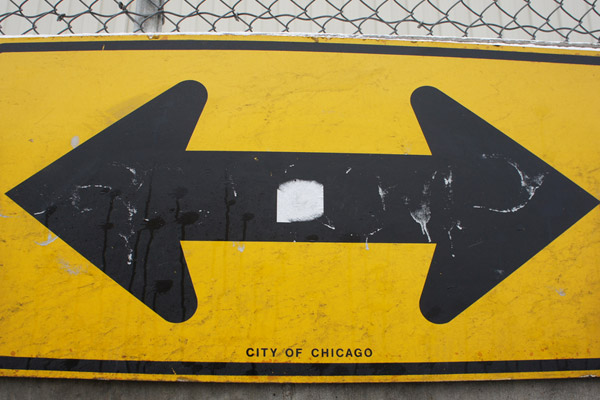
Following up yesterday's piece about the connections between City Hall, a lobbying firm, and the red-light camera suppliers, the Tribune has a piece on the data the Emanuel administration has provided to demonstrate the effectiveness of red-light cameras as part of its push for speed cameras. That data has been a contentious issue since Trib reporter David Kidwell went toe-to-toe with the mayor in a lengthy interview:
You guys have continued to repeat wrong information because it doesn't fit your story line. You keep saying that the cameras, there's no evidence. I'll get you the facts. It's actually a 60 percent reduction in fatalities.
[snip]
Your story, I know you do this, your story says that there's no evidence, when in fact right here under your nose is the evidence. And I've repeated it to you guys and you refuse. I've had people call you with it and you refuse to publish it.
But what the reporters received was a claim, with no access to the "confidential" underlying data. So they pulled their own data, and found a less substantial reduction in fatalities, one that parallels trends across the city and country. And, remarkably enough, they got the administration to backtrack:
Presented with that conclusion, the Emanuel administration this week reversed course and said its initial statistical summary was error-ridden and shouldn't have been provided in the first place.
The mayor "inadvertently handed out a working document showing a set of incorrect numbers," Kubly said Monday. "I think it was an honest mistake."
It's not the first time. For starters, there was the SUV-road damage claim that turned out to be false. And the authors point out that Garry McCarthy made a mistake regarding pedestrian fatalities:
Police Superintendent Garry McCarthy, echoing "talking points" prepared for mayoral surrogates, declared to state lawmakers that the rate of pedestrian fatalities in the city was far higher than in New York, where he had once worked.
In fact, the opposite is true, according to a study released by the city in August, which concluded that "relatively speaking, Chicago has a safe pedestrian environment given the volume of traffic."
A safe pedestrian environment compared to New York, yes. A safe traffic environment, not necessarily. When McCarthy's statement was challenged, a city spokeswoman said that he "garbled the findings of a different study that said the rate of fatalities in all traffic accidents, not just those involving pedestrians, was higher here than in New York." That does have some basis in data.
One problem, obviously, has been a straightforward mangling of data. But another has been the administration's fixation on fatalities, particularly pedestrian fatalities, as the critical reason for speed and red-light cameras. Had all this started more broadly instead of a specifically as a children's crusade, it might not have devolved into a data-shootin' match. (Not that the issue will ever cease to be controversial; some cities embrace them, in others they've been an ineffective mess.)
Crashes more generally are less variable, and there's better evidence to support the use of red-light cameras for crash reduction, not fatality reduction. In 2010, two veteran traffic engineers from the Texas Transportation Institute at Texas A&M conducted a lengthy review of the literature, and their conclusions were interesting. (PDF, via this excellent roundup.) They found that the cameras "may or may not reduce total crashes but rarely result in a substantial increase," "may result in an increase in rear-end collisions," and that they "usually reduce crash severity by virtute of reducing the more severe right-angle crashes while sometimes increasing the less severe rear-end crashes."
Translated, that means it's likely that drivers will greet the cameras by slamming to a halt and getting rear-ended. It doesn't make for a good stump speech—"our new program has done a fantastic job in replacing side collisions with rear-end collisions!"—but it's actually a good thing, since the latter are less likely to be severe. Only a couple of the studies they reviewed mentioned fatalities at all; there were positive indications with severity, but severity includes both injuries and fatalities.
It might be more heart-wrenching to emphasize traffic deaths, but it's at the expense of good data.
All this is being used as a cudgel to beat the Emanuel adminstration with the argument that the cameras are about money, not safety. (Today the mayor enlisted the gravitas of a priest to make his case in introducing the ordinance, referred to as the Children's Safety Zones Program.) And it's true that fines are an increasingly fertile source of city revenue, a trend that well precedes the current leadership. But the problem isn't just a loss of trust in the administration, it's a loss of trust in information. The abuse of data makes people wary of those who wield it—not just skeptical of the carpenter, but of his tools.
Photograph: ed_whetstone


